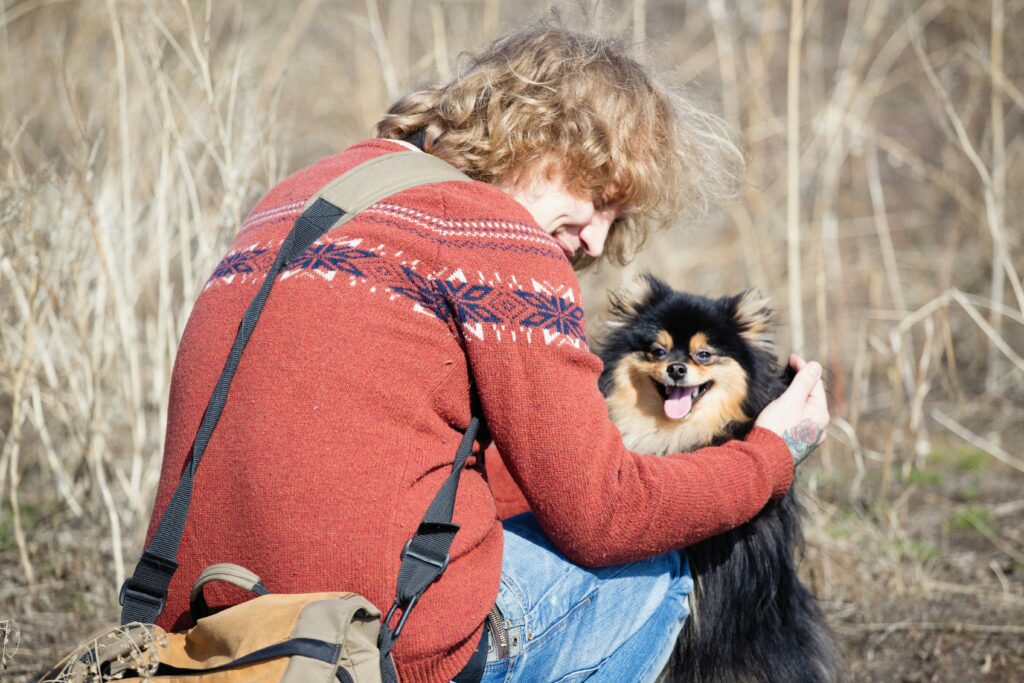
You know that voice you use with your dog? The one where you ask, “Who’s a good boy? Are you hungry? Should we go outside?” in that sing-song tone that makes you sound slightly ridiculous? Well, science has some great news: you’re not being silly – you’re being smart.
Your dog’s brain loves baby talk
Recent research shows that dogs’ brains literally light up when they hear the high-pitched, melodic way we naturally talk to them. Just like human babies respond better to “parentese” (that exaggerated, musical way we talk to infants), dogs are hardwired to pay attention when we use that same conversational style.
Think about it: when you say “Sit!” in a sharp, commanding tone versus “Would you like to show me a beautiful sit?” in your sweet dog voice, which one gets better results? Most dog parents instinctively know the answer, and now neuroscience backs it up.
Dogs can actually hear much higher pitches than we can, making them incredibly sensitive to the musical qualities of our voices. When we use conversational tones, we’re speaking their preferred language.
It’s all about connection, not control
Here’s what’s fascinating: dogs evolved alongside humans for thousands of years as partners, not servants. They’re naturally wired to cooperate with us, not just obey commands. When we treat training like a conversation rather than a drill session, we tap into that ancient partnership.
Instead of repeatedly shouting “Come!” try something like, “I wonder if you’d like to come see what I have over here? This looks pretty interesting!” You’re giving your dog context, making them a participant in the decision, and showing respect for their intelligence.
Real examples that work
Traditional approach: “No! Down! Stay!”
Conversational approach: “I can see you’re excited about our visitor. Let’s try lying down so you can say a calm hello.”
Traditional approach: “Heel!” (repeated constantly)
Conversational approach: “That’s an interesting smell, isn’t it? Should we check it out together, or keep walking?”
Traditional approach: “Get in the car!”
Conversational approach: “Time for a car ride! I know this part feels tricky, but you’re so brave.”
Notice how the conversational approach acknowledges your dog’s feelings, provides context, and treats them as a thinking partner rather than just a rule-follower.
Why this matters for your relationship
Dogs who receive conversational communication show less stress, learn faster, and have stronger bonds with their humans. They become active participants in their training rather than just trying to avoid making mistakes.
This approach is especially helpful for anxious or sensitive dogs. When you acknowledge their feelings (“I see that noise worried you”) and explain what’s happening (“We’re just going to the vet for a quick check-up”), you help them feel more secure and understood.
Making the switch is easier than you think
You don’t need to throw out everything you’ve learned about training. Simply expand your commands into friendly conversations while keeping the same meaning:
- “Sit” becomes “Could you show me a sit?”
- “Stay” becomes “I’ll be right back – can you wait here for me?”
- “Come” becomes “I’d love for you to come join me over here”
The magic happens when you start explaining things to your dog the way you would to a young child. “After we eat breakfast, we’ll go to the park.” “I know you don’t love baths, but they help you feel clean and comfortable.”
The bottom line
That instinct to chat with your dog isn’t embarrassing – it’s exactly what their brain craves. Dogs are incredibly social, intelligent animals who thrive on communication and connection. When we honor that by treating them as conversation partners rather than command-followers, everyone wins.
So go ahead, explain to your dog why they can’t eat that mysterious sidewalk snack, tell them about your day, and ask them questions in that ridiculous voice. Your dog’s tail-wagging response is proof that you’re doing something very, very right.


